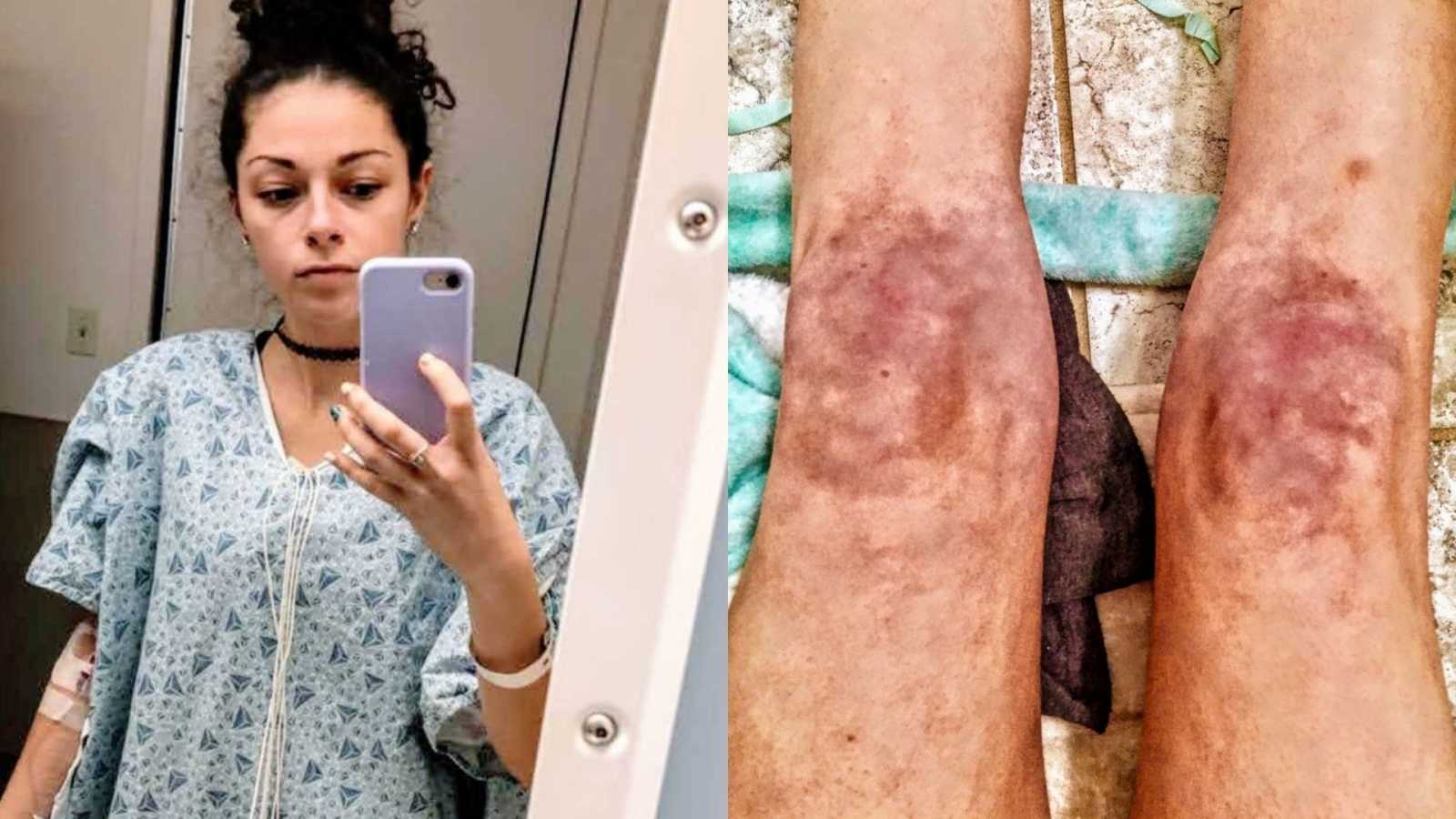“Around the time I turned 21, I began noticing something was ‘off’ about my body. Something about the way it moved, the way it felt to be inside of myself, was different and I couldn’t place it. I was just… aware of myself. I could sense that my energy levels were somehow lower and sort of unpredictable. I seemed to need to stop and take breaks many times throughout the day. I told myself it was probably nothing. I had a few doctors tell me it was probably nothing. I doubted myself.
That fall, my immune system began crashing. Working in childcare at the time, it was expected I’d bring home my share of bugs and germs. But I was collecting minor ailments quicker than I was fighting them off. I developed De Quervain’s tenosynovitis, a form of tendonitis in the thumb. I was told it was from lifting infants at my job. Multiple doctors assured me this was something that would heal quickly, but it didn’t. I was confused. Doctors are there to help you heal and to give you answers… why wasn’t that happening? When I’d remove my brace, my thumb joint would dislocate. I told my doctors and they said I was probably imagining the sensation. By the time we did any imaging, there was no sign of dislocation at all. I wondered if they were right, if this was completely in my head. I watched my doctors become impatient with me.
Overcompensating for the injured hand, I eventually began relying on my other one. Friends and coworkers became skeptical as I soon began bracing both hands. I felt the weight of their suspicion hanging over me. Growing up, I rolled ankles all the time and would need a brace here and there. I never knew why, but I have always been prone to injury. I had been doubted for my pain before, but this was different. There was a heavy sense of dread and fear weighing on my chest. I felt torn between my experiences — feeling like a stranger in my own body, but in tune enough to know in my heart something was wrong.
I began having pain in my hips. Maybe it was just how I was sitting? I’m good at finding ways to blame myself. I started to wonder if maybe I was actually losing my mind. One day, my shoulder was hurting. My mom told me it was visibly asymmetrical and looked like the bone was sticking out. So why hasn’t a single doctor believed me? I wondered if I was dying. I wondered how late would be too late to fix this. I wondered if I was being deceived somehow. The paranoia crept in slowly. I decided I was, indeed, losing my mind.
One day at work, as I stood up from sitting on the floor, my right hip ‘snagged’ and my leg buckled beneath me. My body was standing, but my right hip was still completely locked into a bent position. A wave of fear came over me as I scrambled to adjust myself without drawing attention. A shooting pain ran up my side and down into my thigh like electricity. My stomach rolled over inside me. This was the moment I realized I wasn’t dealing with something simple. This was chronic. Something was structurally wrong with my body.
Over many months, I had all kinds of tests to investigate my repeated hip and shoulder injuries. An x-ray showed something was sitting abnormally in my right hip, and an arthrogram was ordered. During a hip arthrogram, a needle is used to inject contrast fluid directly into the joint to see it better under MRI. This is done under local anesthetic. Draped in a blue gown, I lay on a raised metal table, curled in the fetal position. I begged them to understand I was not numb enough to continue. They didn’t believe me. They didn’t believe my pain. ‘Just a bit of pressure,’ they said as I watched the giant needle disappear into my hip joint. Unwisely, I returned to work later that day. I started to crash from the adrenaline. The pain was unbearable. I was given a hard time about leaving, mocked for not planning ahead. They didn’t believe me. They didn’t believe my pain. Ultimately, the arthrogram came back clear. I was crushed.
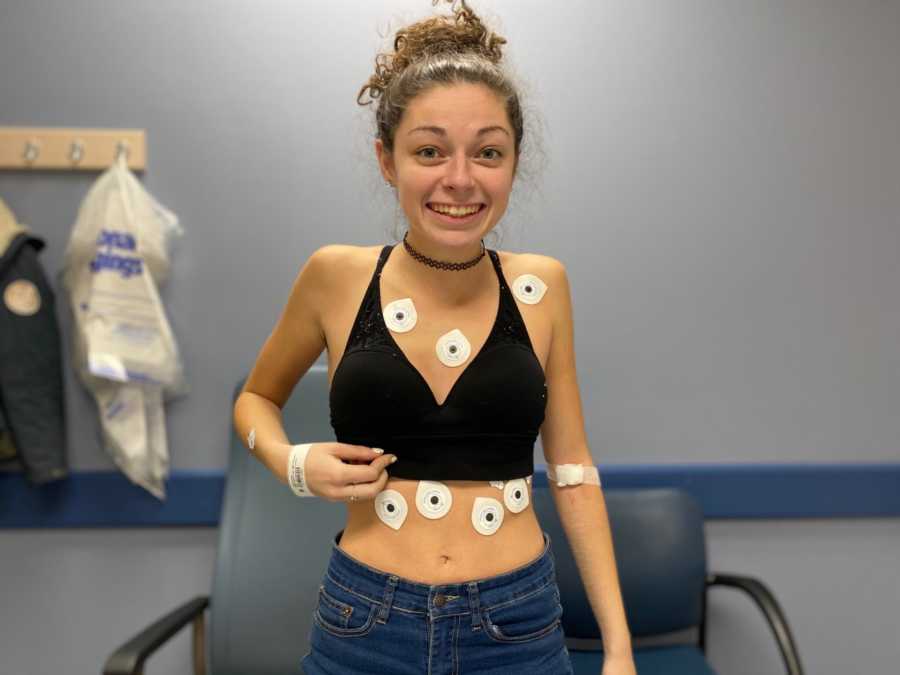
My doctor decided to run bloodwork to check for celiac antibodies, insisting this must be the cause of my widespread joint pain. My test came back negative, but they ordered an upper endoscopy with biopsy just to be sure. I remember waking up coughing. I remember being blinded by pain. Two nurses rushed in and explained, upon removing the scope, I’d gotten a hematoma the length of my esophagus up to my uvula. Basically, the foreign object had caused blood vessels to rupture everywhere and my throat was badly bruised from the inside. I spent the next few days in agony. I couldn’t swallow. It felt like razor blades. They said they had never seen this before. They told me endoscopy is a painless procedure. Could I actually be imagining my pain?
As it turned out, I do have Celiac Disease, a serious autoimmune disorder triggered by gluten consumption. I was placed permanently on a strict gluten-free diet. Because of my false negative antibody results, my rheumatologist wanted to test to see if I make antibodies at all. I wondered how that was even a possibility. I was beginning to realize how easy it is to miss something simply because it’s unusual. After almost a year gluten-free, my pain was only getting worse.
I was repeatedly tested for Lyme disease, Rheumatoid Arthritis, Lupus, vitamin deficiencies, thyroid function, even HIV. Everything kept coming back normal. Several doctors suggested I may be simply experiencing anxiety. How could anxiety be breaking my joints down? Meanwhile, my health seemed to be declining rapidly. People would notice me limping and I became ashamed when I couldn’t explain why. I was bloated and uncomfortable. I was critically fatigued and my memory was suffering. I started forgetting words. I had moments of confusion that would cause me to panic. One day, I got into my car after work and thought I was in the wrong car. Sometimes I would realize I didn’t know where I was, even at work or at a friend’s house. I kept these moments to myself because I felt no one would believe me. My skin hurt. I’d black out when standing up and my heart would race. Maybe they were right and it was just anxiety after all. I felt embarrassed. I was getting sicker and sicker in front of everyone in my life and didn’t know why. My doctors didn’t know why. I wondered if I had made it all up. I wondered if I simply ignored it, it would all go away somehow. I looked completely normal. Silently, I carried the weight of knowing people did not believe me. Slowly, I became an expert at tuning out my pain and moving it to the background. I was suffering, but at least now no one would see. I learned to ignore my pain before I even knew if it was real or not.
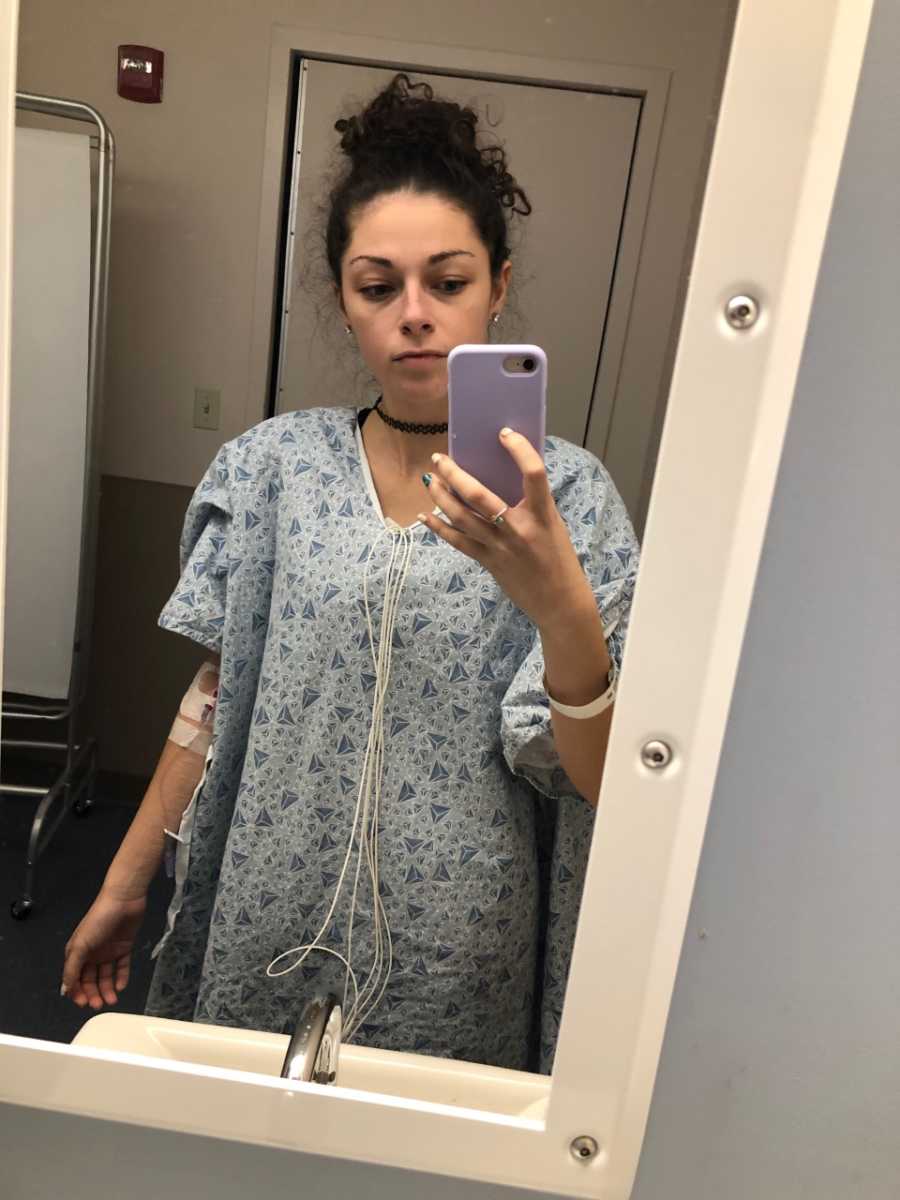
After waiting several months to follow up with my rheumatologist, I anxiously arrived at the appointment ready to tell her I felt we were getting nowhere; I seemed to be getting worse and not better. She looked at me with a sort of skeptical expression, ‘Could you stand up and touch the floor for me? Without bending your knees?’ Really? For a moment, I got frustrated. Here I am, telling you I’m getting sicker and you want me to stretch?! I got up from the paper-covered table and bent over, placing my hands flat on the floor at my feet. This was easy, something I knew I could do without even trying. My entire life I’d always been flexible and never really had to work for it. I stood up. ‘Do I pass?’ I joked. She just looked at me and said, ‘You’re not supposed to be able to do that.’
She proceeded to tell me there is a disorder of the connective tissue that causes significant flexibility. ‘Think contortionists,’ she said. ‘Except they become very, very sick.’ My mind was racing and exhausted. I didn’t understand how this could at all or be related to how I’d been feeling for so long. Sure, I’m flexible. But why am I dizzy? Why does eating still make me sick? Why is my brain malfunctioning so badly? To be honest, I was angry. She told me she highly recommended I see a geneticist, and sent me home with a stapled packet of information on Ehlers-Danlos Syndrome, a condition I’d never heard of before.

Ehlers-Danlos Syndrome (EDS) is a genetic disorder, meaning I was born with it. How could I just be getting sick now from a condition I have had my entire life? I needed a referral to genetics. My primary care doctor was skeptical. She told me EDS is so rare it would most likely be a waste of time to pursue this. She asked if I was having any substance abuse issues. I was taken aback. I told her no. I told her about how I was very hesitant to take any medications, much less for pain. I told her I wanted to find the cause of my pain, not band-aids. Reluctantly, she wrote me a referral. I was so relieved. On my way out, she asked me to leave a quick urine sample, so I did. I suddenly felt hopeful. We were finally going to have some answers! A few days later, I received a lab result on my phone. My doctor had run a full drug screen without telling me. It came back clean, but it didn’t matter. She didn’t believe me. She didn’t believe my pain. She thought I had lied! I was heartbroken.
In the weeks leading up to my genetics appointment, I researched this new condition near constantly. I reflected on my life and all the ways this made sense. As an infant, I skipped crawling entirely. I lacked the muscle tone required, but instead I scooted around and people thought it was cute. I walked late, but not late enough where any intervention was ever necessary. All these signs from so early on were so subtle and easily missed. I remember dreading going for walks and begging to be carried because I just couldn’t keep up. I had always been the kid with the weird party tricks. I could bend my fingers in weird ways and do backbends without thinking. I did gymnastics for years and didn’t have to work very hard for the flexibility I had. No one could have guessed this was a problem, because in gymnastics it’s so sought after. Still, I’m not terribly graceful. I stumble a lot and knock things over. I lack awareness of where my body is positioned in the space around me, known as ‘poor proprioception.’ To this day, I often sit in ways people find unusual or uncomfortable. Though I never had a word for it, I’ve always known my body works differently.
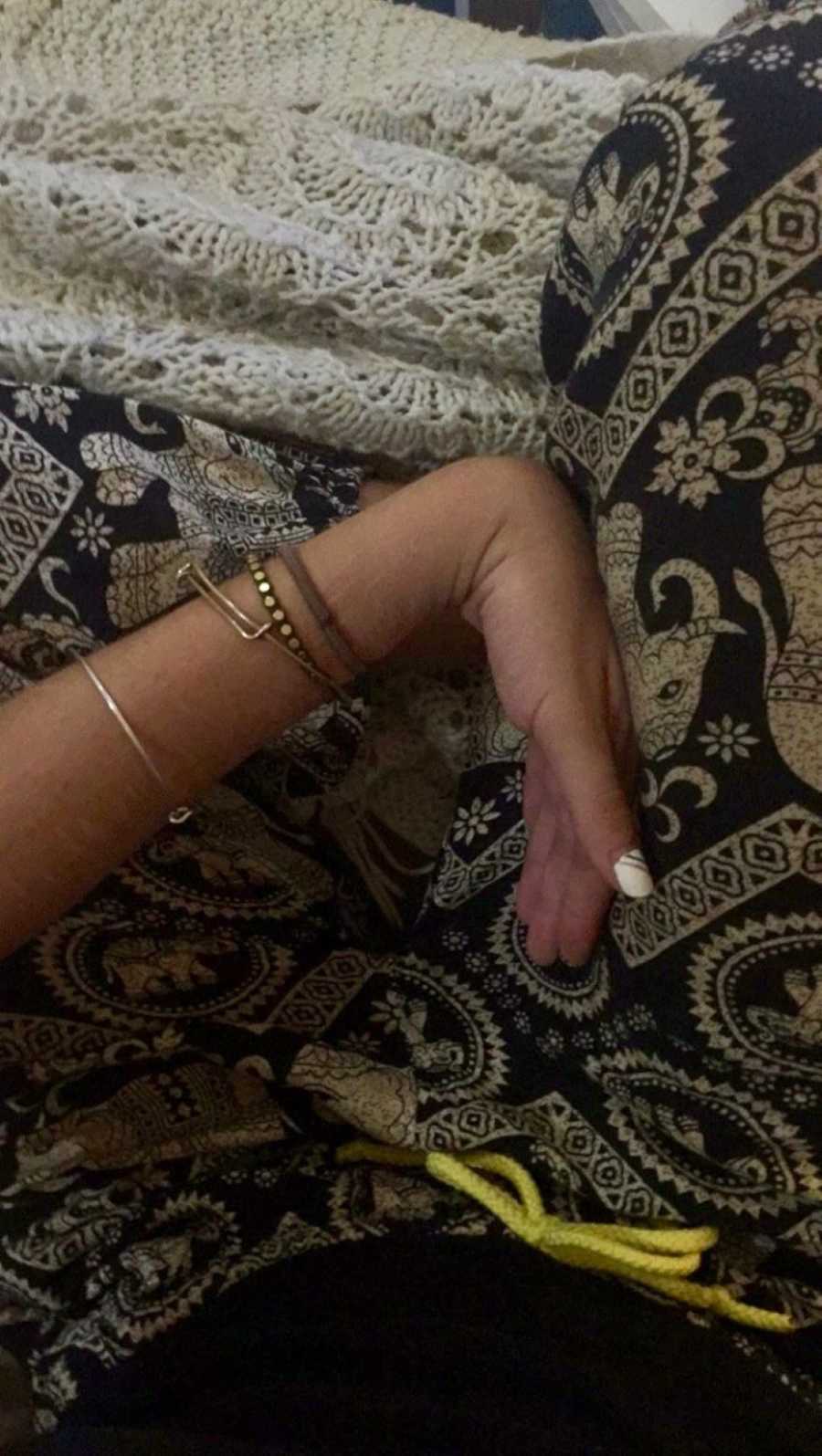
EDS is a genetic disorder in the way collagen is synthesized, meaning the body will always be coded to create more faulty collagen. This makes EDS an incurable condition. Treatment is symptom management. There are 13 types of EDS, marked by which tissues are most affected. The vast majority of EDS cases are of the Hypermobile type (hEDS). I learned we are all held together by collagen. It makes up about 30% of the protein content in the body, acting as a sort of scaffolding to support joints, tendons, organs, and everything in between. In a healthy individual, collagen is built like a strong glue. It allows the joints to bend within a safe range of motion. We take it for granted… until it stops doing its job. In my case, this ‘glue’ is defective. Imagine building a popsicle stick sculpture with liquid Elmer’s glue that just never dries. It’s unstable and doesn’t hold shape. My skin and joints can extend well beyond the normal limits, frequently to the point of dislocations and subluxations (partial dislocations). I wasn’t crazy. This whole time I had actually been falling apart at the seams.
Finally, my genetics appointment rolled around. I was poked and prodded, my medical history carefully reviewed. I felt for the very first time I was being listened to. In the medical world, my flexibility and ‘double-jointedness’ are referred to as ‘hypermobility.’ Geneticists use a test called the Beighton score which assesses hypermobility. She said she felt confident after clinical evaluation that I had Ehlers-Danlos Syndrome type III, or Hypermobile type (hEDS). I went home with tears of relief. It has a name.
I spent the next year learning to live with my condition. I joined an online support group, where I slowly began to realize something about my diagnosis… didn’t quite fit right. Hypermobile EDS is not typically associated with stretchy skin and excessive or abnormal scarring, which I have. I was encouraged to get a second opinion.
A couple months later, I had an appointment with a new geneticist. This is it. I was poked and prodded again. He looked at my scarring, pulled at my skin and held a tape measure to my face. He told me he had no doubt we were looking at a connective tissue disorder. However, given several of my physical features he wanted to rule out a few conditions, namely Vascular Ehlers-Danlos Syndrome (vEDS) and Loeys-Dietz Syndrome, which are associated with a shortened life expectancy. It was like a roller coaster I couldn’t get off of. A blood sample was taken for genetic testing, and I left yet another appointment without answers. I spent many nights worrying myself to tears. I frequently found myself in bed, in the car, out with friends, lost in thought, silently panicking as I confronted my own mortality. All this time spent seeing doctor after doctor, becoming sicker, only to be told I would never actually get better.
When I returned to see my geneticist, I found I had been initially misdiagnosed. EDS is criminally underdiagnosed and not adequately taught in medical school. Most doctors have never even heard of it at all. There is also a lot of crossover between types and it can be difficult for even a trained professional to differentiate. Finally, in March of 2019 I was officially diagnosed with Ehlers-Danlos Syndrome, type I or Classical type (cEDS). cEDS is similar to hEDS, but characterized by more significant skin and organ involvement. This is a rarer type, occurring in only 1 in 20,000-40,000 people. My skin splits and tears easily, though it’s soft and ‘doughy.’ I have to be careful with things like plastic packaging and aluminum foil as I get cut easily. The faulty collagen causes my skin to be very stretchy in places, so much so I can pull it inches from my body. In some places, however, it lacks elasticity and it folds and rolls in unusual ways. Even minor scratches take weeks to heal, and everything scars. After a while, the scars stretch and bend inward, becoming very thin. This is known as ‘cigarette paper scarring’ and is characteristic of cEDS. As a teenager, I had gotten lots of stretch marks while underweight, another criteria for my type. Everything began rapidly making sense.
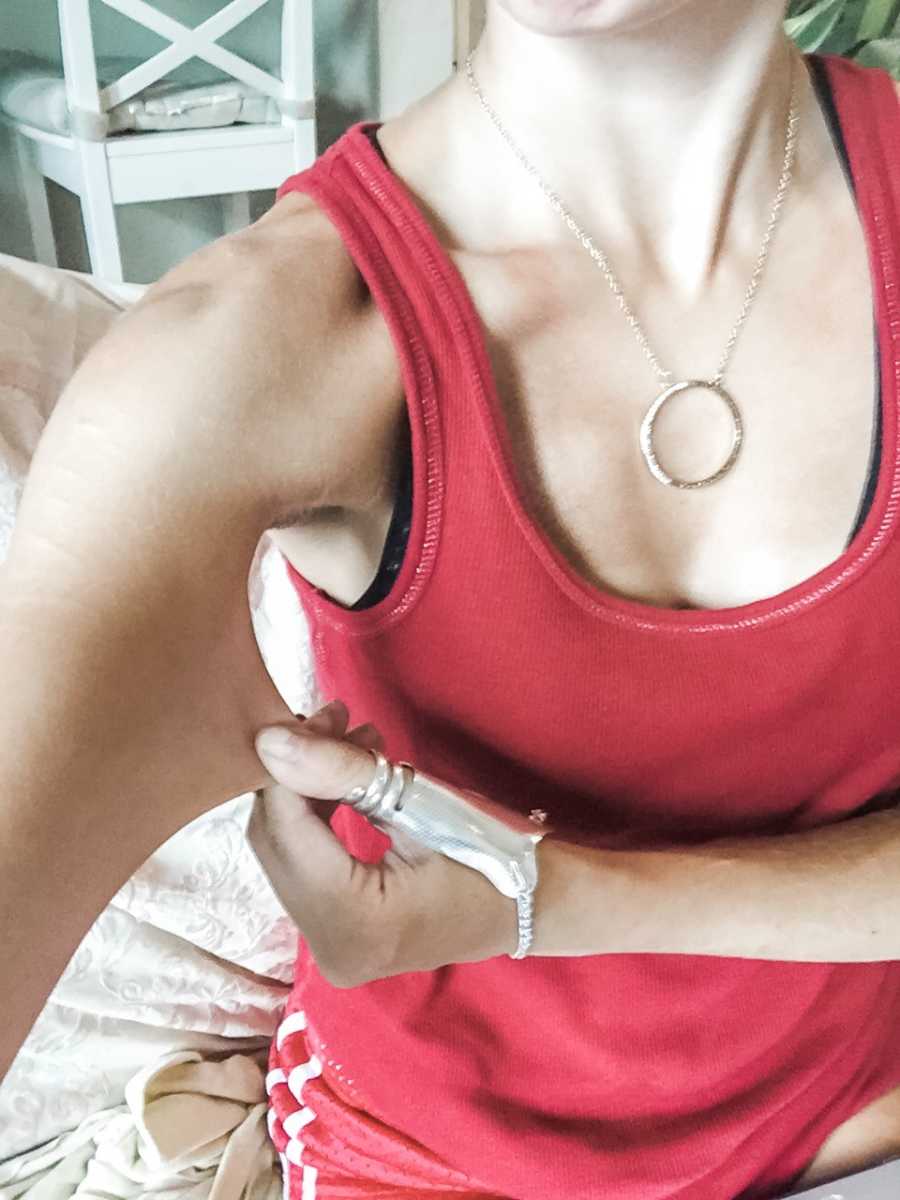
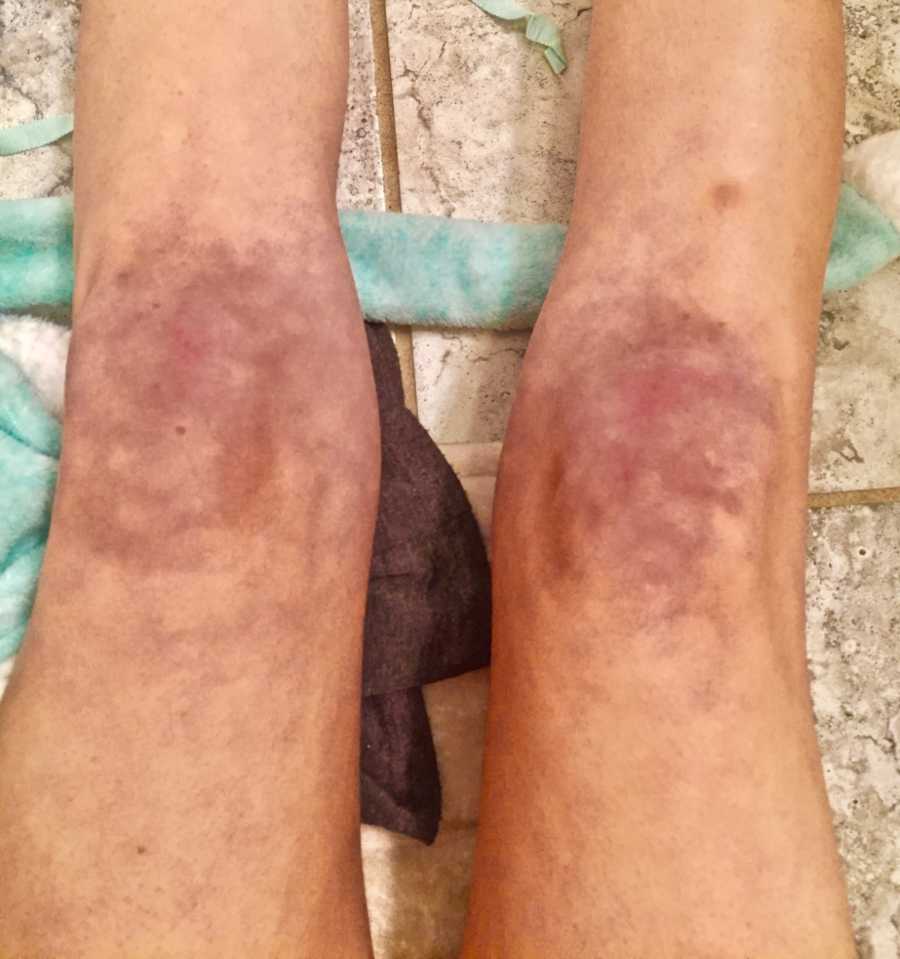
A weight was lifted from me that day. I wasn’t crazy. It wasn’t anxiety. All along I’d had a condition that was literally causing my body to fall apart. You’d think this would have come as devastating news. To find out in your early twenties that you have a progressive, degenerative, debilitating condition that will ultimately lead to physical disability is, well, hard. But to learn you will no longer need to suffer the emotional and psychological burden of not being believed… is pure catharsis. I learned I could rely on my body to tell me when something is wrong. I realized doctors are people. I realized I would now need to learn to advocate for myself in ways I was unused to. I began to understand the importance of raising awareness for this bizarre, misunderstood condition so fewer people would have to suffer alone and undiagnosed. A fire sparked within me and I carry it everywhere I go. It’s given me the strength to face my new reality head on. I no longer doubt my own experience.
The last few years of my life have been a whirlwind of scary medical experiences, health anxiety, and constantly changing limitations and abilities. Sometimes I can go on short hikes with my friends. Some days I lay on the floor of my bedroom covered in tears and melting ice packs. Those days are the ones that remind me of my strength.
Sometimes I use a cane or crutches, either for stability or to lift weight off my hips when they’re in poor shape. I have a brace for seemingly every body part. There was a period of time when I wasn’t using them when I should have been. I was afraid of looking sick. They didn’t match my outfits. People would always ask me ‘what happened’ and I was embarrassed. Slowly, I’m learning to camouflage my condition while still taking care of myself. Living with chronic illness is all about finding balance. I use silver ring splints to help me play guitar. They look like jewelry and people always compliment me on them! Music is my outlet and has been an absolute miracle for me. It’s given me a method of turning my emotions and pain into something tangible and real. I’ve been so humbled by it and am grateful for the opportunity to connect with others.
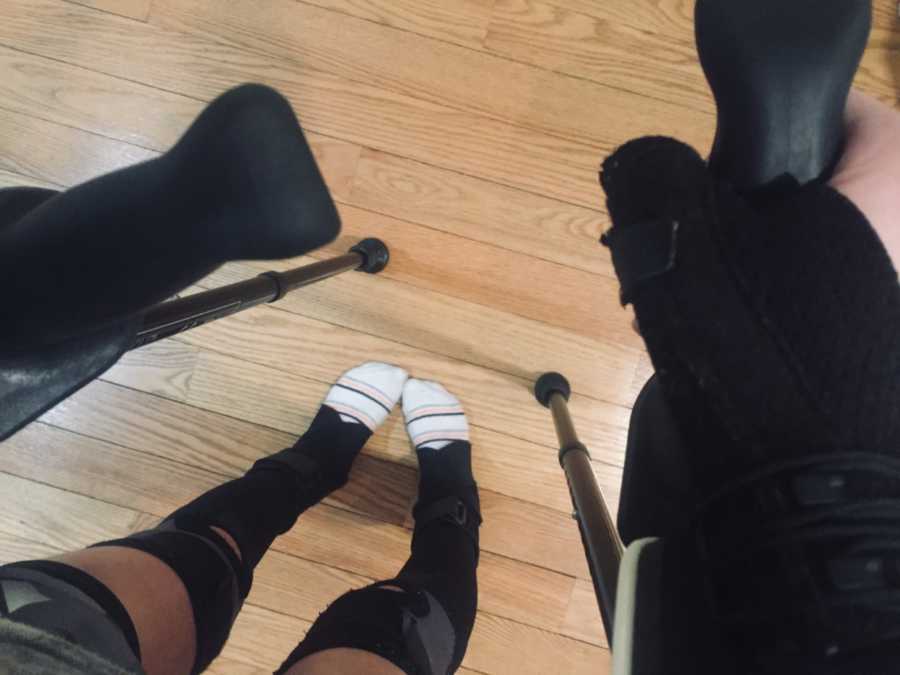
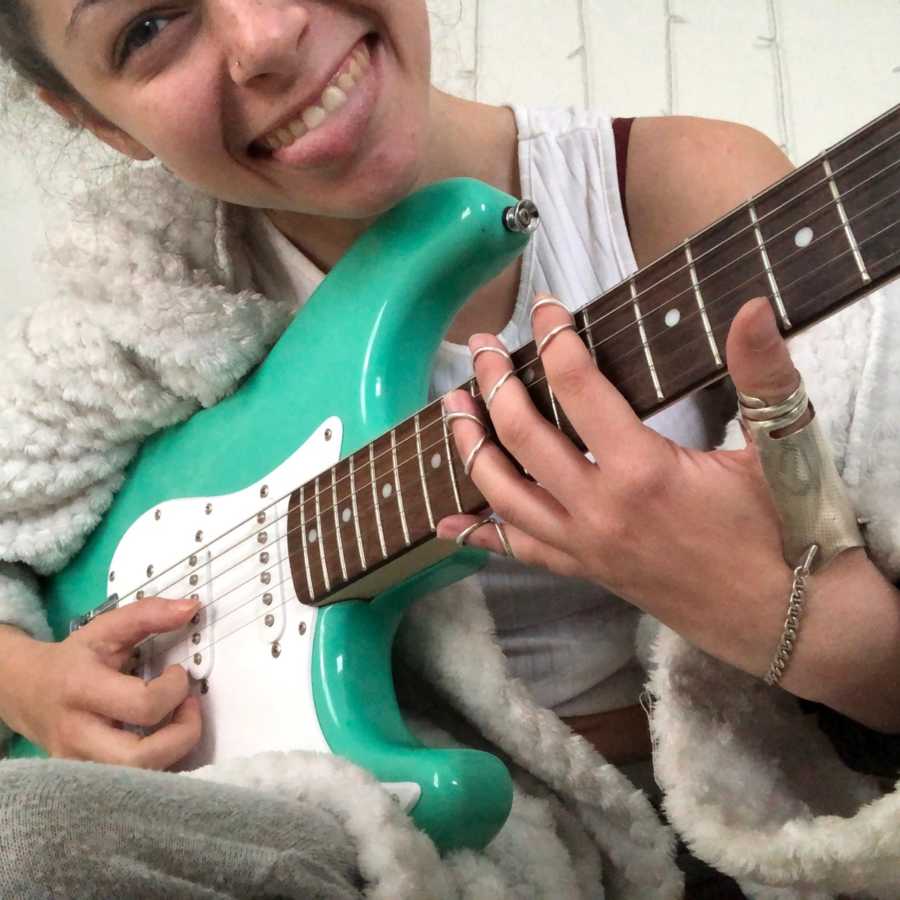
Since my initial diagnosis, I have been diagnosed with several more life-altering conditions that are secondary to EDS. Something I’ve learned is EDS patients are frequently resistant to local anesthetic. I knew it! I’m not crazy. The same broken collagen that causes the joints to slip out of socket is also woven into the eyes, muscles, blood vessels, and organs. People with EDS often have something called Dysautonomia, which is a dysfunction of the autonomic nervous system. This is what controls the body functions you do not consciously control, like blood pressure, heart rate, digestion, breathing, and bladder function. I cannot regulate my temperature. I sweat when I’m cold. Sometimes when I stand up, the blood vessels in my legs stretch and can’t effectively send blood back up to my heart. To compensate, the heart begins to beat faster. If enough blood cannot reach the heart and brain, blood pressure drops and can cause dizziness and fainting. This was the first ‘comorbidity’ I was diagnosed with as a result of EDS, known as Postural Orthostatic Tachycardia Syndrome (POTS). I am on a high salt diet and have to stay hydrated to keep symptoms down.
My specific type of Ehlers-Danlos carries the risk of cardiac involvement. Recently, I developed a new heart murmur. My heart valves are weakened by the defective collagen. When blood pumps out from the heart into the body, the valve doesn’t close properly, allowing blood to backflow into the heart. It feels like my heart has butterflies, and I frequently find myself trying to decide if I’m having a POTS episode or am ‘just anxious.’ I worry often about my heart symptoms and experience panic attacks as a result. It’s a vicious cycle and I’m still learning ways to navigate it.
My digestive function has also been affected. I have a condition called Gastroparesis, where the stomach takes too long to empty and can cause symptoms like nausea, vomiting, and acid reflux. I consider myself fortunate to have a relatively mild case which has so far been manageable with diet restriction and medication. My relationship with food is complex. With so many restrictions, treatment plans sometimes contradict each other and I’m left frustrated.
It can be scary to think about the future. It will be different than I imagined. I find I’m living more in the present. I practice mindfulness where I can. I take every day in stride and have found it easier to be grateful. It’s helped my mental health immensely.
There’s a lot to be learned from being in chronic, widespread pain. It does change you. My nerves are damaged. My feet burn. My face tingles and my skin hurts. My joints ache and throb and slip around constantly. Dislocations stop me in my tracks. I’ve learned my strength comes from inside. I’ve learned how resilient I am; I can do really difficult and scary things and survive. This confidence in myself is something I did not have prior to getting sick. I trust myself now.
Something I still struggle with is the desire to hide my condition from others, so I’ve been challenging myself to be more open about my experience. Without the support of my family, friends, and incredible partner, Dennis, I would never have come this far. Even during times of absolute uncertainty, they have stood by me. I’m grateful for them beyond words. Being twenty-something and trying to keep up with constantly shifting abilities is challenging at best. I’m working on accepting help when I need it.
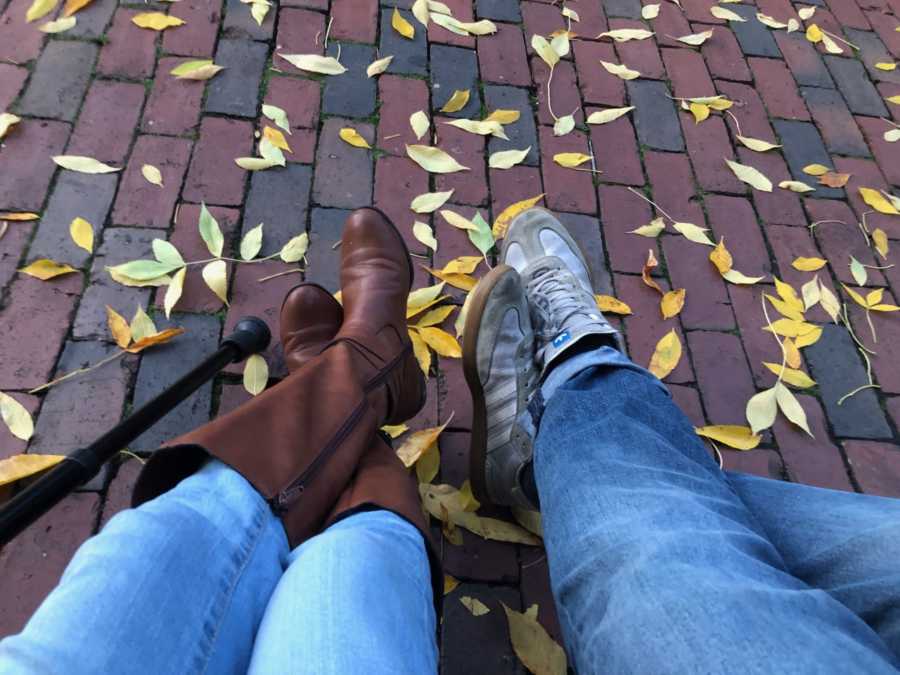
When you are hurting for so long and seeking help, only to be met with criticism and skepticism, you begin to feel smaller. The lasting effects of this experience are something I am prepared to battle for a long time. I have to regularly remind myself of the growth that has come from this and how many things I will continue to learn. I’m still healing. I have come to accept there are things I can control and others I can’t. This acceptance has brought a calmness I can’t explain. I spent a long time allowing myself to mourn the loss of a future I’d imagined. Now, I have trouble seeing the things that have been taken from me. Now, I can see the unwavering spirit it’s taken to get this far. I understand it sounds hard to believe. But despite ribs that dislocate with a sneeze and skin that feels like fire, I feel stronger now than I ever did before.”


This story was submitted to Love What Matters by Emily Tehan of Boston, MA. You can follow their journey on Instagram and YouTube. Submit your own story here, and be sure to subscribe to our free email newsletter for our best stories, and YouTube for our best videos.
Read more about EDS:
Provide strength and encouragement for others. SHARE this story on Facebook with friends and family.

